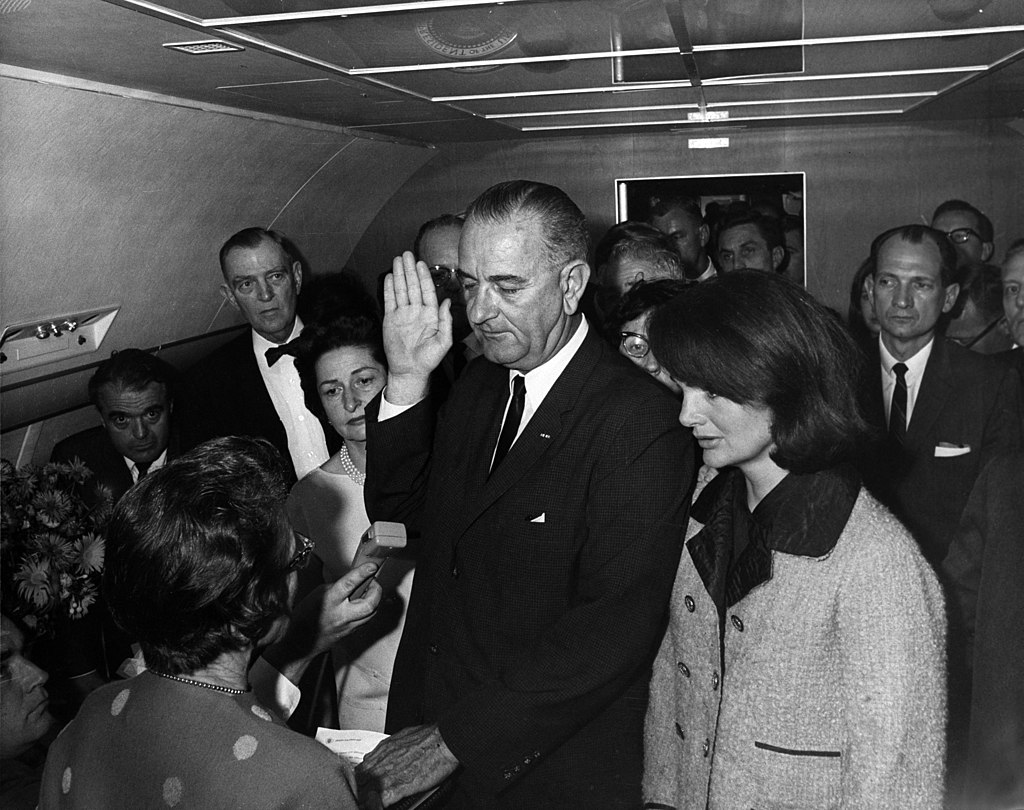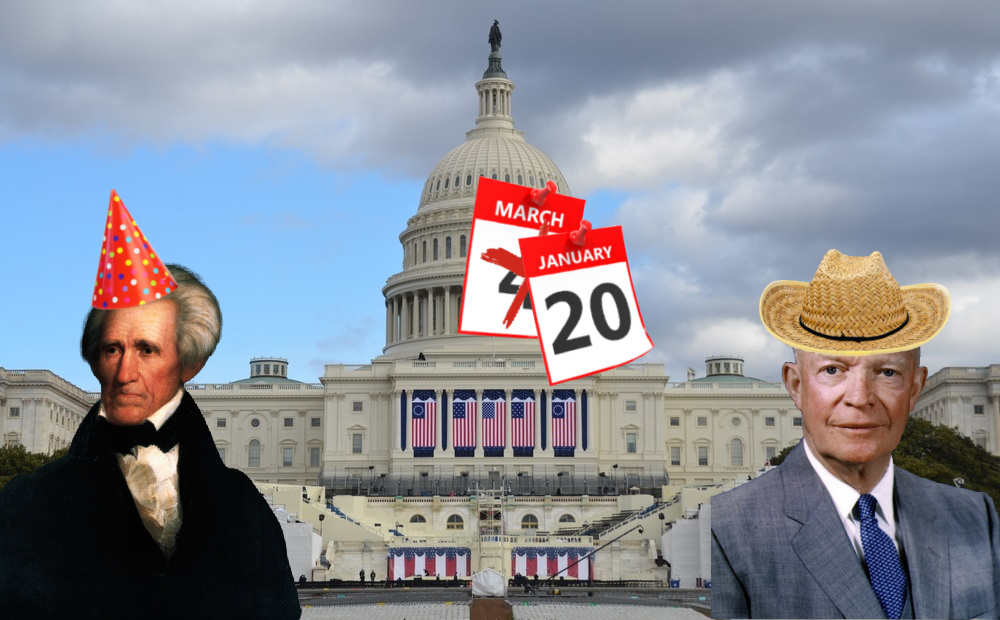Earlier today, Joseph R. Biden Jr. was sworn in as the 46th President of the United States. It was not exactly a typical inauguration ceremony, with a small audience, flags replacing the crowds on the National Mall, and participants wearing masks. It was not, however, the first inauguration that felt a little bit different! Here are some interesting and unusual inaugurations throughout American history, with a little help from COBBLESTONE Magazine!
The earliest inaugurations
Inauguration ceremonies take place on the steps of the Capitol, right? Not always! The first President, George Washington took the oath of office at Federal Hall in New York City (you can visit and see the chunk of concrete he stood on today)! After him, John Adams was sworn in at Congress Hall in Philadelphia (you can visit there, too)! Thomas Jefferson was the first President to be sworn into office in Washington, DC. John Adams did not attend the inauguration, as he was mourning the recent death of his son, making him the first outgoing President to miss his successor’s inauguration. The fourth President, James Madison, was the first to attend an inaugural ball. He described the occasion as “exhausting and unpleasant.”
While Jefferson and Madison both took the oath of office at the Capitol, President number five, James Monroe, was the first sworn in outside the Capitol instead of indoors! Monroe was actually sworn in at a temporary Capitol, located where the Supreme Court building is now, after the old one was burned down during the War of 1812.

Strange events at inaugurations
Andrew Jackson’s first inauguration turned into the wildest party that the White House has ever seen! He hosted an ‘open house’ at the White House for the public to attend. Over 20,000 people showed up, broke White House furniture and china as they stood on chairs to try to get a glimpse of the new president, and some even climbed in windows to get into the party! President Jackson was whisked away from the chaos and bowls of punch were placed on the White House lawn to lure the revelers out of the house.
At Dwight D. Eisenhower’s inauguration in 1953, a cowboy on horseback actually lassoed the new President! Don’t worry– this was all planned in advance as part of the show!
Special speeches
The longest inaugural speech was given by the President who served the shortest time. William Henry Harrison gave an 8,445 word speech that ran around two hours long in the chilly weather. (For comparison, President Biden’s inaugural address was around 2,500 words, slightly over the average of 2,337.) Harrison only served for 31 days before he passed away, making him the first President to die in office. Who gave the shortest inaugural address? George Washington, whose second inaugural address was only 135 words long!
Over the centuries, technology has made inaugural addresses more accessible to the public. Thomas Jefferson’s was the first to be published in a newspaper, while James K. Polk’s in 1849 was the first transmitted by telegraph. Audiences in 1925 got to hear Calvin Coolidge’s inaugural address over the radio, while moviegoers in 1929 could watch Herbert Hoover’s on a newsreel. Inaugurations weren’t shown on television for twenty more years, when Harry S. Truman was sworn in.
Party-free zones
This year’s inauguration isn’t the only one without an inaugural ball. In fact, out of President Franklin D. Roosevelt’s four inaugurations, only his first included a celebratory ball– and he didn’t even attend. Lavish celebrations didn’t seem appropriate during the Great Depression and World War II. Due to rationing during World War II, he also didn’t have a parade during his final inauguration.
The first President to forego the new custom of an inaugural ball was Franklin Pierce, who was mourning the death of his young son and wasn’t in a partying mood.
Back-to-back Presidents Woodrow Wilson and Warren G. Harding chose to cancel inaugural balls as cost-saving measures, and the following several inaugural balls were all privately held ‘charity balls,’ not part of the official festivities.

LBJ Library photo by Cecil Stoughton
Odd oaths of office
In 2009, President Barack Obama took the oath of office twice. During his swearing in on the steps of the Capitol, both he and Chief Justice John Roberts stumbled over the official wording. Roberts had accidentally said “That I will execute the office of President to the United States faithfully” instead of “That I will faithfully execute the Office of the President of the United States” and prompted Obama to repeat after him. Just to be on the safe side, they took the oath of office again that evening in the White House.
Lyndon B. Johnson was the first and only President to be sworn in on an airplane. He took the oath of office on Air Force One as it traveled from Dallas to Washington, DC following the Kennedy assassination.
What day is it?
Nowadays, inaugurations take place on January 20, but this hasn’t always been the case. George Washington’s inauguration took place on April 30. The Constitution set inauguration day for March 4, which makes sense when you consider how long it used to take to travel and communicate. By the 20th century, this span of time between election and inauguration started to feel a little excessive. The 20th Amendment, also known as the colorful nickname of “The Lame Duck Amendment,” changed the date of the inauguration to January 20 so that the previous President doesn’t have to wait around for months feeling like, well, a lame duck.
Other than cases where the previous President died in office, we’ve had a few cases of inaugurations taking place on a different date. March 4 fell on a Sunday in 1821, and devoutly religious President-elect Zachary Taylor refused to take the oath of office on a Sunday. His inauguration took place on Monday. He set a precedent, and ever since then, no inauguration has taken place on a Sunday.
On the other hand, Rutherford B. Hayes secretly took the oath of office one day early on March 3 following an extremely close and controversial election. He was the first President to be sworn in within the White House, although he did hold a public inauguration ceremony at the Capitol on March 5. Did the USA have two Presidents for one day before Ulysses S. Grant’s term ended?
What’s new?
Not all inauguration ceremonies are alike, but they’re still a tradition stretching back over 232 years. Did you learn anything new or interesting from this article? Want to learn more fascinating facts about American history? Check out COBBLESTONE Magazine for a glimpse into American history all year long!



